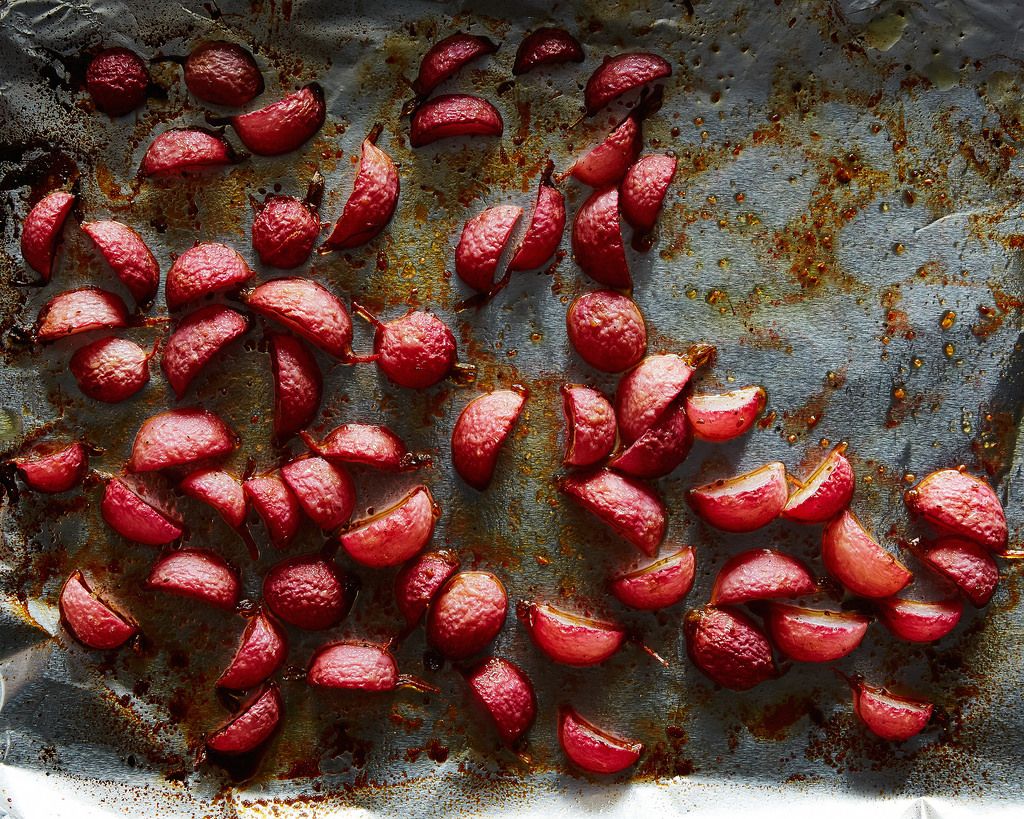Even if you’re doing your best to cook root-to-leaf and nose-to-tail, there are probably still some edible bits you’re missing. Every other Sunday, we'll focus on one overlooked scrap, and show you how to turn what would otherwise be trash into a dish to treasure.
Today: When it comes to radishes, don’t toss those tops!

Unless you’re living in a warmer climate where you're already distracted by the season's first strawberries (please don’t rub it in), your local farmers market is probably filled with verdant vegetables—lettuces, green onions, asparagus. So it’s no surprise that spring radishes suck you in. They are like produce Sirens, distracting you with their colorful orbs, begging you to ignore the surrounding swaths of green. (The only difference is, I know of no ill-effects from heeding the call of radishes.)
You’re entranced enough to pick up a couple of bunches, but then you head home, toss the plastic bag full of radishes into the crisper drawer of your refrigerator, and forget about them. Well, you forget about them until you notice the radishes swimming in a pool of green slime and are forced to pluck the roots out from the mess of leaves-turned-seaweed.
Don’t let those radish tops go to waste again. When you get home from the farmers market, cut the greens from the roots and store them separately. Then, when you’re ready to use the greens, wash them really well—they can hang on to dirt and grit.
More: Start storing your greens the right way.

Even though the roots and greens are best stored separately, it doesn’t mean you have to use them separately. Food52er Viviane Bauquet Farre serves radish roots and leaves together by pairing a silky radish top soup with roasted radish roots coated in crushed fennel seeds. For the soup, if you don’t have lemon-infused oil, just add some fresh lemon juice to taste for a hit of acid. And for the roasted radishes, her method of slow-roasting leaves the roots caramelized and soft—very soft, like Broccoli Cooked Forever soft. If you’d prefer the roots to still have some tooth to them, consider roasting them uncovered for only 20 to 25 minutes.
This recipe uses a lot of radish greens, but here are a few more ideas that we think are tops (sorry, couldn’t resist):
-
Sauté them as you would any other green.
- Make radish top pesto.
- Add a few leaves to a salad or sandwich. (Radish greens have a coarse, prickly texture, so stick with the smaller, tender leaves when using them raw.)
Radish Top Soup and Slow-Roasted Radish Roots with Fennel Seeds by Viviane Bauquet Farre
Serves 4 to 6
For the radish top soup:
3 tablespoons extra-virgin olive oil
4 shallots, skinned, halved, and finely sliced (1 1/4 cups)
1/4 teaspoon red pepper flakes
2 garlic cloves, skinned and finely sliced
8 ounces Yukon Gold potatoes, peeled and cut into 1/2-inch cubes (1 1/4 cups)
3 cups vegetable stock
2 1/2 cups spring water
1 teaspoon sea salt, or to taste
Freshly ground black pepper, to taste
12 ounces radish tops without the tough stems (or 12 ounces mustard greens), leaves and tender stems cut into 1/2-inch strips (14 cups loosely packed)
1 tablespoon crème fraîche
Lemon-infused oil as garnish
For the roasted radish roots:
12 ounces watermelon radish roots (4 large), peeled and cut into 1/4-inch slices
12 ounces regular radish roots (14 large), unpeeled and quartered
2 teaspoons fennel seeds, crushed in a mortar
1/2 teaspoon sea salt, or to taste
Freshly ground black pepper to taste
1 tablespoon maple syrup
3 tablespoons extra-virgin olive oil
See the full recipe (and save and print it) here.
Know of a great recipe in the Food52 archives that uses scraps (anything from commonly discarded produce parts to stale bread to bones and more)? Tell me about it in the comments!
Photos by James Ransom



See what other Food52 readers are saying.